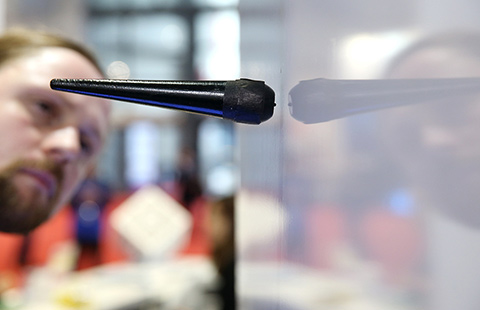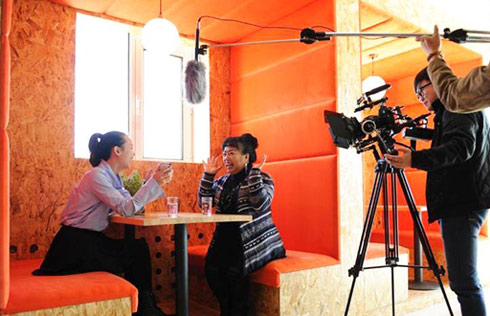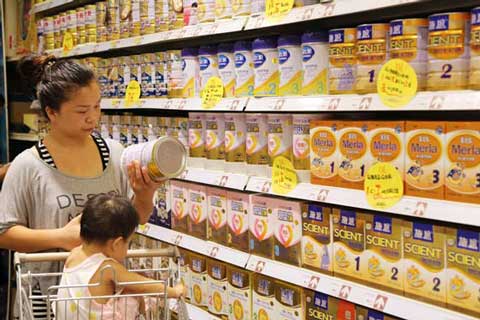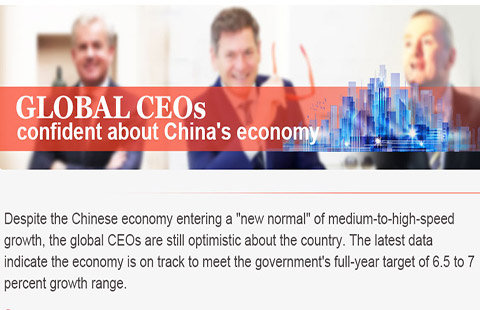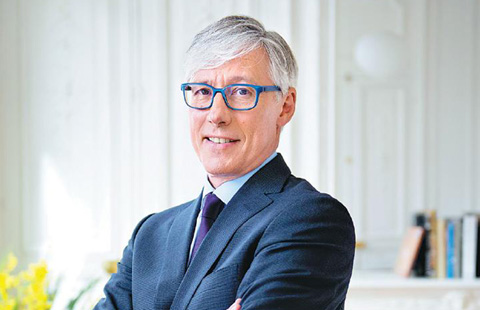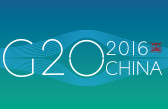CPC steers Chinese economy on right course
BEIJING - With latest signs pointing to improvement in China's economy, the Communist Party of China (CPC) has once again showed that it can steer the economy on the right track against uncertainties at home and abroad.
Facing slowing growth in recent years, the CPC Central Committee with Comrade Xi Jinping as the core made timely judgments and decisions to ensure a steady transition of the economy from previous high growth to medium-high growth.
Constant upgrades to the CPC economic governance ideology brought positive change to the economy, including steady growth of 6.7 percent for the first three quarters this year, rising consumption and a growing service sector.
Evolution of economic governance
After the 18th National Congress of the CPC in 2012, the central leadership judged that the economy confronted three problems at the same time: gearing down of economic growth, pains from restructuring, as well as digesting the effects of previous stimulus policies.
This laid the foundation for correct and targeted macroeconomic policies.
Amid protracted economic slowdown, Xi said in an inspection tour to Central China's Henan province in May 2014 that the country should adapt to a "new normal" and remain cool-headed.
China is still in a significant period of strategic opportunity. We must boost our confidence, adapt to the new normal conditions based on the characteristics of China's economic growth in the current phase and stay cool-minded, Xi said.
The new normal is characterized by medium-high growth instead of high growth, constant upgrading of economic structure and seeking impetus from innovation, Xi later added.
The central leadership ordered local governments to actively adapt to the new normal and respond to difficulties and challenges in economic and social development as they arose.
One challenge came from previous over-reliance on stimulation of the demand side, including investment, consumption and exports, to support growth, but the effectiveness of the strategy has weakened in recent years.
Realizing that fact, the central leadership started to stress "supply-side structural reform" in 2015, a turning point in macro-policy.
Supply side reform includes tax cuts, lowering corporate borrowing costs, incentives for specific industries, tackling overcapacity, reducing property inventories and easing administrative restrictions.
Encouraging signs
The evolving economic wisdom has resulted in concrete improvement in multiple indicators in recent months.
The manufacturing sector posted its best performance in more than two years, adding to signs of stabilizing, data from the National Bureau of Statistics (NBS) showed Tuesday.
The manufacturing Purchasing Managers' Index rose to 51.2 in October from 50.4 in September, above market expectations and the highest level since July 2014.
Macroeconomic figures released in October also pointed to a trend of stabilization in the first three quarters.
GDP growth in the third quarter remained at 6.7 percent, flat from the previous two quarters and in line with this year's annual GDP target of 6.5 percent to 7 percent.
Consumption contributed to 71 percent of growth in the first three quarters, much higher than that for the same period of 2015, showing a more sustained demand structure.
Industrial structure continued to optimize in the same period, with a 52.8 percent share of the service sector in the January-September period, up 1.6 percentage points from a year ago, said NBS spokesperson Sheng Laiyun.
Supply-side reform has progressed, marked by the declines in overcapacity in some sectors, falling inventories of industrial products and commercial housing and reduced costs for companies, Sheng said.
No plain sailing
China's economy has the potential to continue medium-high growth, but the potential will not be realized without help, said Zhang Junkuo, deputy chief of the Development Research Center of the State Council.
"Medium-high growth does not naturally follow rapid growth, but must be attained through constant reform and structural change," Zhang said.
China will implement proactive fiscal policies and maintain prudent monetary policies, according to a meeting of the Political Bureau of the CPC Central Committee last week, chaired by Xi.
The government will continue to moderately expand domestic demand and press ahead with supply-side structural reform with more concrete and detailed policies to ensure annual growth targets are hit, said a statement released after the meeting.
If China can sustain medium-high growth while improving growth quality and efficiency, the economy has sound prospects, laying a solid foundation for China's development goals, said Liu Shijin, an economist with China Development Research Foundation, an official think tank.
A key meeting of the CPC late last month also helped reinforce the positive prospects.
At the sixth plenary session of the 18th CPC Central Committee, the CPC called on all its members to "closely unite around the CPC Central Committee with Comrade Xi Jinping as the core" and vowed to push forward the comprehensive and strict governance of the Party.
A strong CPC leadership will give the country new impetus for realizing its two centenary goals and the continuous improvement of its economic governance.







